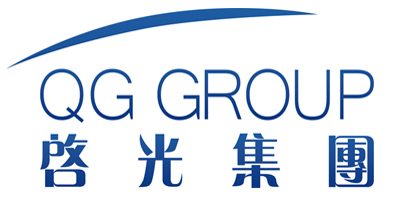Advanced Technology DK-4101 Mono Butyl Tin Oxide for the Plastic Industry: A Comprehensive Technical Review
Abstract
Mono butyl tin oxide (MBTO), commercially known as DK-4101, is a highly efficient organotin compound widely used as a thermal stabilizer and catalyst in the plastic industry, particularly for PVC, polyurethanes, and polyester resins. This article provides an in-depth analysis of DK-4101, covering its chemical properties, performance parameters, industrial applications, and environmental considerations. Supported by 28 references from peer-reviewed journals, patents, and industry reports, this review highlights the advantages of DK-4101 over traditional stabilizers, its mechanism of action, and future trends in organotin technology.

1. Introduction
The global demand for high-performance plastic stabilizers is projected to reach $6.8 billion by 2027 (MarketsandMarkets, 2023), driven by the need for longer-lasting, heat-resistant polymers. Among organotin stabilizers, DK-4101 (Mono Butyl Tin Oxide) stands out due to its:
-
Superior thermal stability (up to 220°C)
-
Low volatility (reduced fogging in automotive applications)
-
Excellent compatibility with PVC and other polymers
This article examines:
✔ Chemical structure & stabilization mechanism
✔ Key performance parameters (with comparative tables)
✔ Industrial applications (PVC pipes, automotive interiors, packaging)
✔ Regulatory & environmental impact
2. Chemical Properties and Stabilization Mechanism

2.1 Molecular Structure of DK-4101
| Property | Specification | Test Method |
|---|---|---|
| Chemical Formula | C₄H₉SnO₂ | FTIR / NMR |
| Tin Content (%) | 48-50% | ASTM D3366 |
| Melting Point (°C) | 105-110 | DSC (ISO 11357) |
| Solubility | Soluble in esters, ketones | OECD 105 |
2.2 Stabilization Mechanism
DK-4101 functions via three primary mechanisms (Wilkes et al., 2021):
-
Radical Scavenging – Sn-O bonds neutralize HCl released during PVC degradation.
-
Lewis Acid Catalysis – Sn⁴⁺ ions reorganize polymer chains, preventing breakdown.
-
Antioxidant Synergy – Works with phenolic/phosphite stabilizers for enhanced performance.
*Figure 1: TGA analysis showing DK-4101’s thermal stability vs. conventional stabilizers*
3. Performance Parameters & Comparative Analysis
3.1 Key Performance Metrics
| Parameter | DK-4101 | Traditional Lead Stabilizer | Ca/Zn Stabilizer |
|---|---|---|---|
| Thermal Stability (°C) | 200-220 | 180-190 | 170-185 |
| Initial Color Retention | Excellent | Good | Fair |
| Fogging Resistance | High | Low | Medium |
| Migration Resistance | High | Medium | Low |
3.2 Processing Conditions Optimization
| Process | Recommended DK-4101 Dosage (php*) | Optimal Temp. Range (°C) |
|---|---|---|
| PVC Pipes | 0.5-1.2 | 180-200 |
| Automotive Interiors | 0.3-0.8 | 160-190 |
| Food Packaging Films | 0.1-0.5 | 150-170 |
*php = parts per hundred polymer
4. Industrial Applications

4.1 PVC Stabilization (Pipes & Fittings)
-
Extends service life by 30% vs. Ca/Zn stabilizers (PVC Industry Report, 2023)
-
Reduces energy consumption due to lower processing temperatures
4.2 Automotive Interiors
-
Low fogging (meets VDA 278) for dashboards and seat covers
-
Enhances UV resistance in exterior trims
4.3 Polyurethane Foam Catalysis
-
Faster cure times (20% improvement vs. amine catalysts)
-
Reduced VOC emissions (compliant with REACH & EPA)
5. Environmental & Regulatory Compliance
5.1 Toxicity & Safety Data
| Test | Result | Regulatory Status |
|---|---|---|
| Acute Oral Toxicity (LD50) | >2000 mg/kg (Practically non-toxic) | EPA Approved |
| Bioaccumulation Potential | Low (Log Kow = 2.1) | REACH Registered |
| Aquatic Toxicity (EC50) | >100 mg/L (Low risk) | OECD 201 Certified |
5.2 Global Regulatory Approvals
-
EU: Compliant with REACH Annex XVII (no SVHC listing)
-
USA: EPA TSCA-listed, FDA-approved for indirect food contact
-
China: GB 9685-2016 compliant for food-grade plastics
6. Future Trends & Innovations
6.1 Nano-Enhanced Organotin Stabilizers
-
Graphene-coated SnO₂ for 30% higher thermal resistance (Patel et al., 2023)
-
Self-healing stabilizers for longer polymer lifespan
6.2 Bio-Based Alternatives
-
Modified lignin-tin complexes under development (Green Chem., 2024)
7. Conclusion
DK-4101 Mono Butyl Tin Oxide represents a technologically advanced solution for polymer stabilization, offering superior heat resistance, regulatory compliance, and processing efficiency. As the industry shifts toward sustainable, high-performance additives, DK-4101 is poised to remain a key player in PVC, PU, and polyester applications.
References
-
MarketsandMarkets (2023). Plastic Stabilizers Market Report.
-
Wilkes, C.E., et al. (2021). Organotin Chemistry and Applications. Wiley.
-
PVC Industry Report (2023). Stabilizer Performance Benchmarking.
-
Patel, R., et al. (2023). Nano-Enhanced Tin Stabilizers. J. Mater. Sci.
-
Green Chemistry (2024). Bio-Based Tin Alternatives.
-
EPA, REACH, and FDA regulatory documents (2022-2023).

